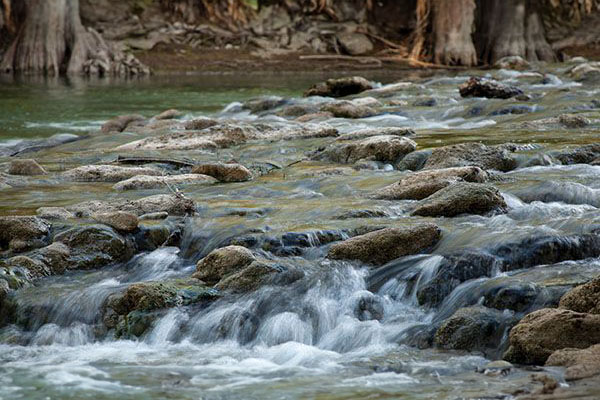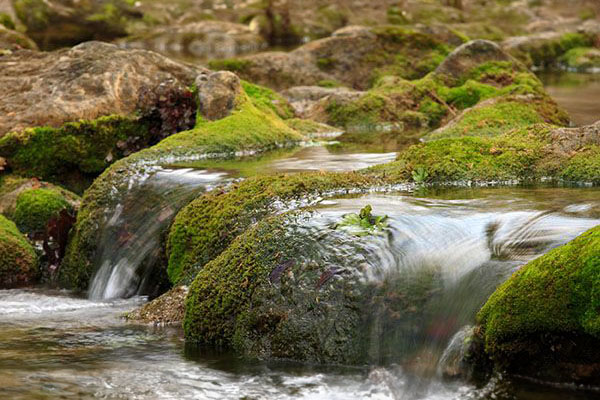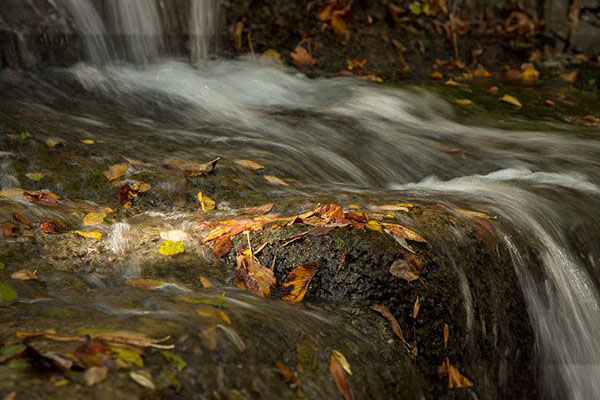Groundwater Protection
The multi-faceted groundwater protection program includes locating, identifying and assessing all Edwards wells, prioritizing a list of known abandoned wells and implementing the required action for reducing potential risks to groundwater quality. Initiatives designed to protect water quality in the area of the Recharge Zone include: Special handling and storage of regulated materials; assessing and monitoring conservation easements; improving the implementation and maintenance of rural and urban best management practices; and training first responders to reduce potential Edwards Aquifer Recharge Zone (EARZ) impacts resulting from accidents and emergencies. Additionally, the Edwards Aquifer Protection Program (EAPP) and Edwards Aquifer State Resource Concern (EA SRC) programs also protect natural recharge quality and quantity.
Conservation Easements on the recharge and contributing zones of the aquifer are a significant component of fulfilling the EAA mission to preserve and protect the Edwards Aquifer.
In partnership with the Edwards Aquifer Conservancy (EAC), the EAA and EAC hold over 7,900 acres of land in conservation easements and actively support the protection of nearly 185,000 acres in the region in partnership with the City of San Antonio, Edwards Aquifer Protection Program (EAPP). In 2008, the EAA joined with the City of San Antonio in an interlocal cooperation agreement to provide geological assessment and easement monitoring support to the EAPP. The EAA continues to perform geologic evaluations on prospective properties and conducts the annual monitoring that is essential to the integrity of the program.
What is a Conservation Easement?
A conservation easement is a voluntary legal agreement between a landowner and a land trust or government agency that limits certain activities on the land for the purpose of protecting its conservation values in perpetuity. Landowners that have a conservation easement placed on their property retain the ownership of their land and can still enjoy many of the uses of the property they did prior to the conservation easement such as hunting, recreation and agriculture.
In the Edwards Aquifer region, conservation easements are an important tool for protecting the quality and quantity of water entering the aquifer as recharge. This is accomplished by limiting development and impervious cover while preserving the natural condition and historical recharge contributions of the property.
Conservation easements are an excellent tool for protecting the conservation values of the Edwards Aquifer as they are a non-regulatory, voluntary and incentive based method of contributing to aquifer sustainability that can benefit both the landowner and stakeholders that depend on this valuable resource.
Considerations for the Future of the City of San Antonio’s EAPP (PDF)In collaboration with the Natural Resource Conservation Service (NRCS), the EAA offers financial assistance in addition to NRCS funding for selected beneficial practices in the EA SRC. Selected practices eligible for funding are listed on page 3 of the EASRC Brochure as Primary Focus zones for landowners approved through the Environmental Quality Incentives Program (EQIP).
Although the EAA and NRCS are program partners, the applicant must make a separate EAA funding request to be eligible for EAA funds. The EAA funding reimbursement for each project will be a single payment. The amount will depend upon the number of applicants in each calendar year but could represent up to a maximum of 20% of the constructed cost. The specific payment to the applicant will be determined late in each calendar year when the number of applicants is known.
To be eligible for EAA funding, the applicant must be approved by the NRCS for EQIP funding, demonstrate the practice is complete, provide the EAA access to the applicant’s site conservation plan, and enter into a reimbursement contract with the EAA. The EA SRC is anticipated to be a five-year program that terminates in 2020. The EAA will update which practices will be funded for the following year when the annual budget is passed in December.
Please refer to the following links for more information on the Edwards Aquifer State Resource Concern:
And for the NRCS SRC EQIP Participation:
To protect and preserve the region’s primary groundwater supply, the EAA requires notification of spills of regulated materials (PDF) that occur over the Edwards Aquifer Recharge Zone.
In addition, the EAA may make recommendations to state and local authorities and third parties regarding the level and type of response to spills that could threaten the aquifer’s water quality. In such situations, the EAA’s role is that of a cooperative resource. However, the EAA reserves the ability to take all appropriate actions to cease or prevent the pollution of the aquifer.
More information regarding the EAA’s spill reporting rules can be found under Chapter 713, Subchapter E, of the EAA rules (PDF). Download the Report of a Spill or Unintentional Discharge Form.
If you have any questions, please contact:
- Kyle Craig, CPESC-IT, CESSWI – Manager Recharge Zone Regulation,
- (210) 222-2204
- (800) 292-1047.

 Aquifer Conditions
Aquifer Conditions




 CURRENT
CURRENT 
